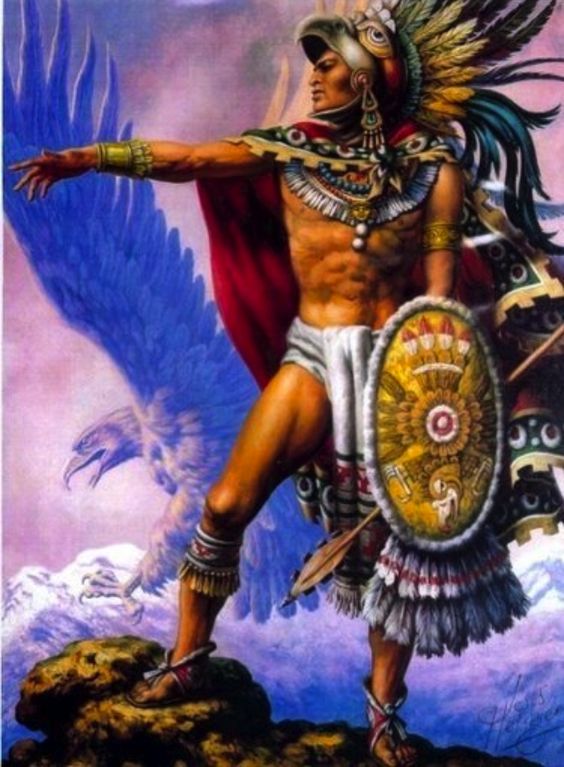 |
| Cuautemoc - Aztec Defender |
Young cousin of Aztec emperor Moctezuma II, married to Moctezuma’s daughter, and the son of Ahuitzotl, Moctezuma’s uncle and the previous Aztec emperor, Cuautemoc assumed command of defense of Tenochtitlán after Hernán Cortés and the Spaniards killed Moctezuma and laid siege to the island-city in June 1521.
He had been a lord of Ixtatecpan and royal eksekutif of Tlatelolco, the “fifth ward” of Tenochtitlán
His decisive leadership during a catastrophic period in Mexican history is often contrasted to the vacillating stance taken by the emperor Moctezuma. This is seen, for example, in the Codex Ramírez, which has Cuauhtémoc denouncing Moctezuma for his weak leadership immediately prior to the latter’s death in June 1520, an event that preceded the Night of Sorrows in which the Spaniards were forced to flee the island-city.
After the siege of Tenochtitlán began, and despite a raging smallpox epidemic and severe shortages of water, food, and other supplies, Cuautemoc refused negotiations and did everything possible to prevent a Spanish victory.
According to one account, during the darkest hours of the siege he delivered the following speech: “O Brave Mexicans ... remember the bold hearts of the Mexica–Chichimeca, our ancestors who, though few in number, dared to enter this land and to conquer it.... Therefore, O Mexica, do not be dismayed or cowardly. On the contrary, strengthen your chests and your hearts ... and ... do not scorn me because of my youth.”
After the Spanish had reduced Tenochtitlán to rubble, they captured Cuautemoc and brought him prisoner before Cortés. “I beg you to end my life” were his reported words to the victorious conquistador. Cortés instead installed him as a figurehead emperor, imprisoned him, and designated lesser notables to take charge of the day-to-day maintenance of the island-city.
His empire in ruins, Cuautemoc did everything he could to lessen the suffering of his surviving subjects, supervising the repair of the city’s water supply and other tasks crucial to the health and well-being of the people.
 |
| Cuautemoc -Statue |
A prisoner of the Spanish for four years, Cuautemoc died in 1525 at the hands of Cortés, who had him hanged on the pretext of his fomenting rebellion during the latter’s ill-fated overland expedition to Honduras.
His memory among Mexicans remains strong, as evidenced by reports of his remains’ being found in Guerrero state in 1949, and by naming practices, most notably Cuauhtémoc Cárdenas
EmoticonEmoticon